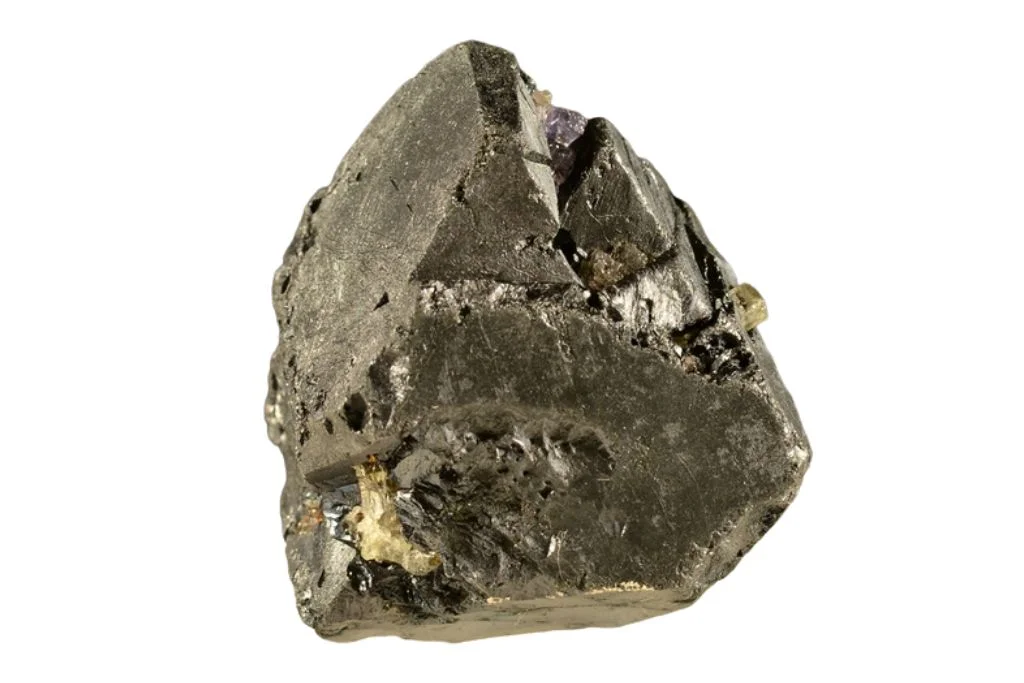Color and Luster of Alabandite
Alabandite is a striking mineral with a distinctive appearance. Its color typically ranges from iron-black to dark greenish-black, often with a subtle metallic sheen. The luster of alabandite is generally metallic to sub-metallic, giving it a somewhat reflective surface that catches the light in an eye-catching manner.
Crystal Structure and Form
This mineral crystallizes in the isometric crystal system, most commonly forming cubic crystals. However, it can also occur in octahedral or dodecahedral forms. Alabandite is often found as massive granular aggregates or as small, well-formed crystals embedded in its host rock. The crystals can range in size from microscopic to several centimeters across.
Physical Characteristics
Alabandite has a relatively high specific gravity, typically between 3.9 and 4.1. It registers between 3.5 and 4 on the Mohs scale of hardness, making it a moderately hard mineral. When freshly exposed, alabandite exhibits a distinct cleavage in three directions at right angles, which is perfect and easily observable.
Unique Features
One of the most notable characteristics of alabandite is its manganese content, which sets it apart from many other sulfide minerals. This composition gives it unique chemical properties and makes it an important ore of manganese in some deposits. Additionally, alabandite is known for its tendency to tarnish when exposed to air, often developing a dull or iridescent surface over time. This tarnishing can create interesting color variations and patterns on the crystal’s surface, adding to its visual appeal.
Historical and Cultural Significance of Alabandite
Alabandite, also known as manganese sulfide, has a limited but intriguing historical and cultural significance. This mineral was first discovered in Alabanda, an ancient city in Turkey, from which it derives its name. While not as widely known as other gemstones, alabandite has been appreciated by mineral collectors and metaphysical enthusiasts for its unique properties and appearance.
Metaphysical Associations
In the realm of crystal healing and metaphysics, alabandite is believed to possess several beneficial properties. It is said to be a grounding stone that helps balance and stabilize one’s energy. Practitioners claim that alabandite can enhance personal power, boost self-confidence, and promote emotional stability. Some also attribute protective qualities to this mineral, suggesting it can shield the wearer from negative energies and psychic attacks.
Common Uses and Applications
Despite its limited availability, alabandite finds use in various fields. In the industrial sector, it serves as a source of manganese, which is crucial in steel production and other metallurgical processes. For metaphysical purposes, alabandite is often fashioned into jewelry or kept as a tumbled stone for meditation and energy work. Crystal healers may place alabandite on the root chakra to promote feelings of security and stability.
Benefits and Healing Properties
Proponents of crystal healing believe that alabandite offers numerous benefits. It is thought to aid in overcoming fears and phobias, particularly those related to darkness or the unknown. Some claim that alabandite can help alleviate symptoms of depression and anxiety by promoting a sense of inner strength and resilience. Additionally, it is said to enhance intuition and psychic abilities, making it a favored stone among those who practice divination or energy healing.

